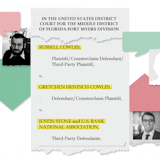More than a city of Lakes, Minneapolis is a city of bridges.
We have so many that we have spares, like the Third Avenue and 10th Avenue bridges, both crossing the Mississippi River just blocks from Hennepin Avenue and I-35W bridges.
In Minneapolis and St. Paul, there are railroad bridges, bridges you forget about until you see some monumental structure leaping across the great river. There are famous tiny bridges (like the one in Loring Park that appeared in the Mary Tyler Moore Show credits) and tidy urban bridges that span the Midtown Greenway or Minnehaha Creek.
What we don’t have are fantastically awesome bridges, like New York’s Brooklyn Bridge, or clever ones that split in the middle on Michigan Avenue, like in Chicago. Still, ours are impressive in their own way. Each has its own story and its own attributes. Take a stroll across these bridges this summer and see if you agree.
Best in show
Hennepin Avenue Bridge (1,037 ft.)
This suspension is simply the most attractive bridge in the city, if you measure by grandeur and classical styling. A drive across at twilight, with the lights blazing and the Grain Belt sign catching the sunset, is one of those iconic (meaning cliched but still marvelous) Minneapolis views.
The bridge we know and love now is the fourth to ford the river at this spot. The first, constructed in 1855, is thought to be the first permanent bridge over the Mississippi —- no small honor, considering the length of the river. It was replaced in 1876 and again in 1891. The third bridge lasted almost a century, and the impressive and self-confident structure we know now was finished in 1990.
If you take it to Nicollet Island, you can walk across part of one of the city’s great bygone structures, the Merriam Street Bridge. It’s a remnant of the Broadway Avenue Bridge, which was removed and replaced in 1987, a hundred years after its construction. A single span from that bridge was saved and installed between the island and the St. Anthony Main area. Its fanciful ironwork reminds you how they spent lavishly on public works in the city’s early years.


